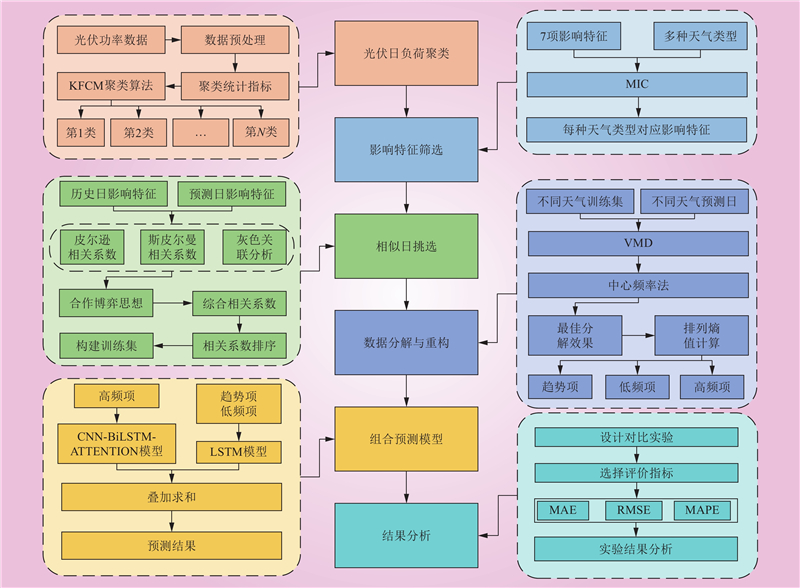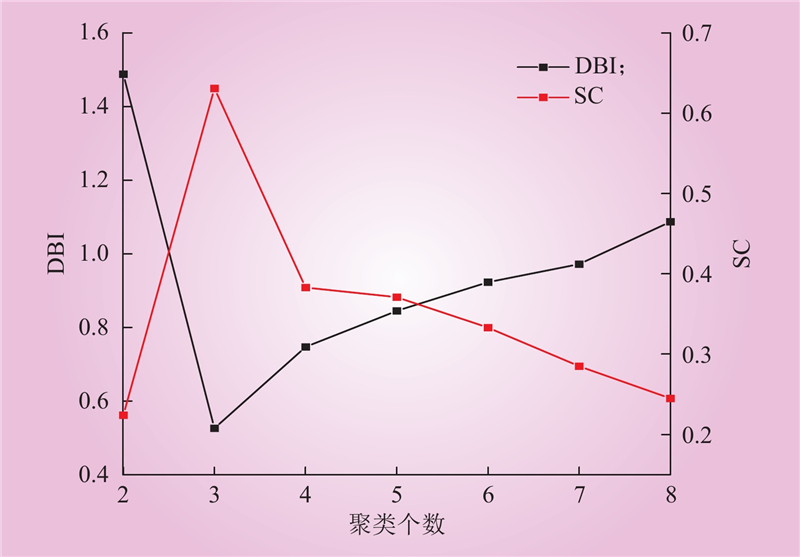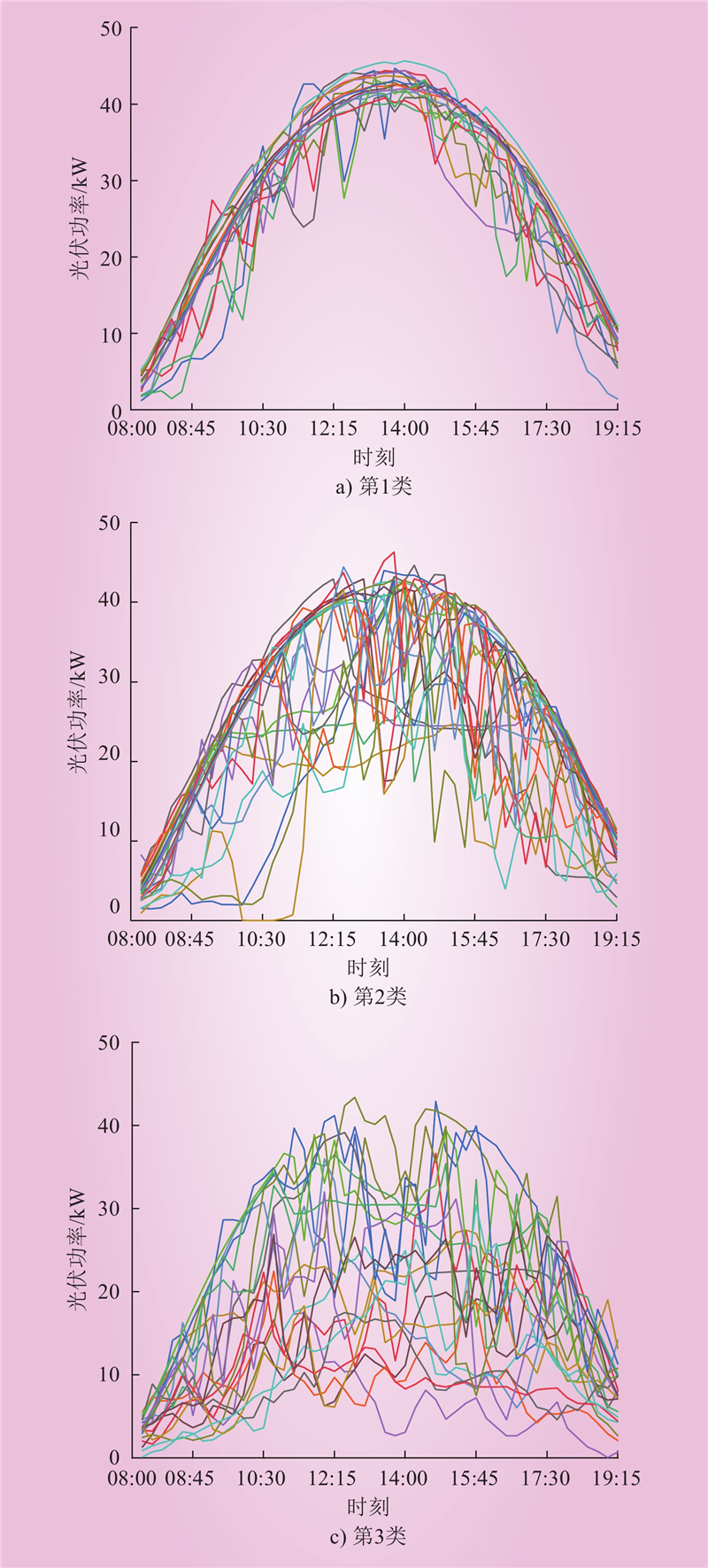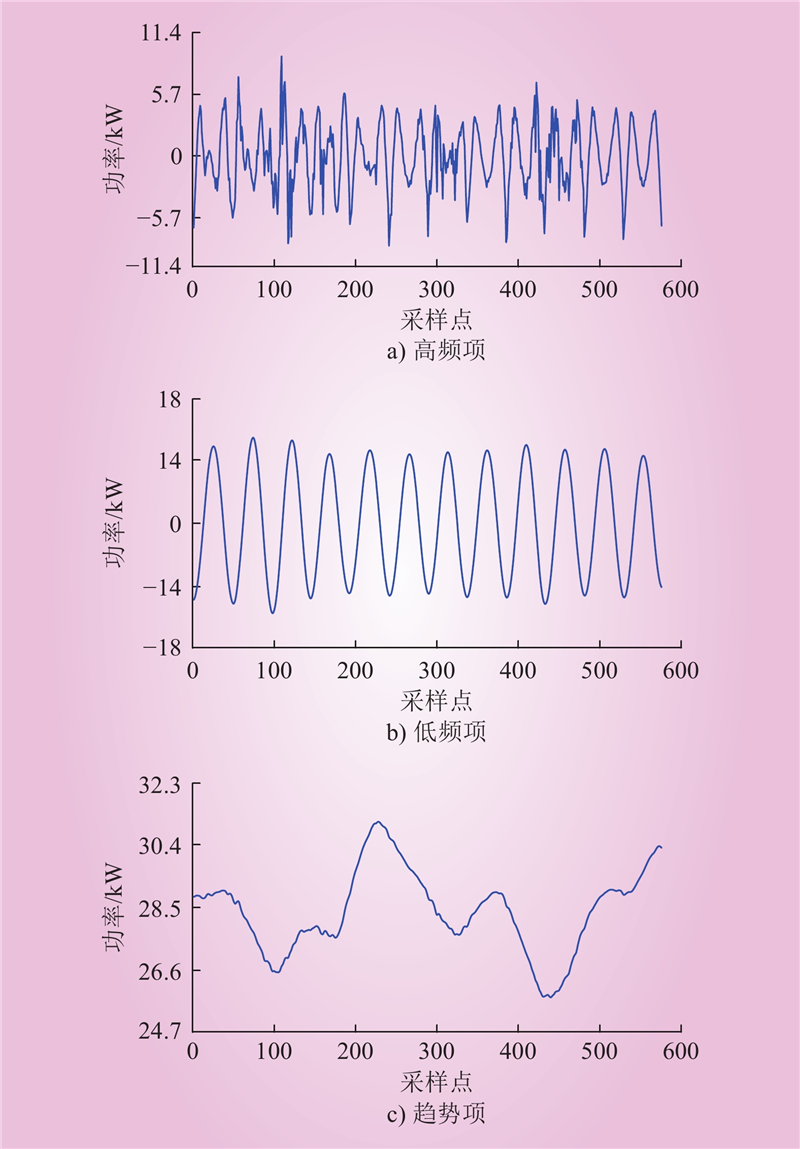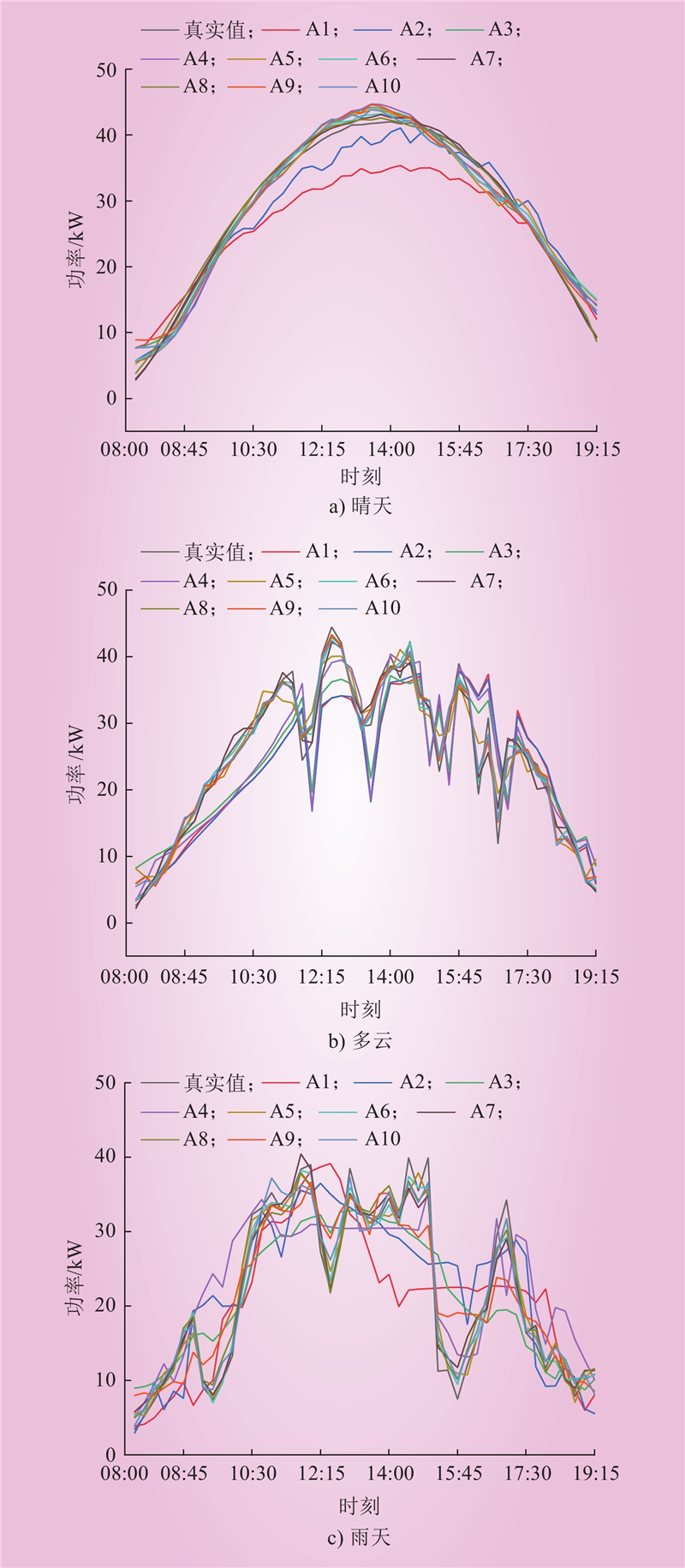| 1 |
王东风, 刘婧, 黄宇, 等. 结合太阳辐射量计算与CNN-LSTM组合的光伏功率预测方法研究[J]. 太阳能学报, 2024, 45 (2): 443- 450.
|
|
WANG Dongfeng, LIU Jing, HUANG Yu, et al. Photovoltaic power prediction method combinating solar radiation calculation and CNN-LSTM[J]. Acta Energiae Solaris Sinica, 2024, 45 (2): 443- 450.
|
| 2 |
ZHANG Y G, PAN Z Y, WANG H, et al. Achieving wind power and photovoltaic power prediction: an intelligent prediction system based on a deep learning approach[J]. Energy, 2023, 283, 129005.
DOI
|
| 3 |
黄泽, 毕贵红, 谢旭, 等. 基于MBI-PBI-ResNet的超短期光伏功率预测[J]. 电力系统保护与控制, 2024, 52 (2): 165- 176.
|
|
HUANG Ze, BI Guihong, XIE Xu, et al. Ultra-short-term PV power prediction based on MBI-PBI-ResNet[J]. Power System Protection and Control, 2024, 52 (2): 165- 176.
|
| 4 |
邱建, 张建新, 朱煜昆, 等. 光伏并网稳定控制系统设计方法及其在南方电网的应用与实践[J]. 南方电网技术, 2024, 18 (7): 139- 147.
|
|
QIU Jian, ZHANG Jianxin, ZHUN Yukun, et al. Design method of stability control system for photovoltaic grid-connected station and its application and practice in CSG[J]. Southern Power System Technology, 2024, 18 (7): 139- 147.
|
| 5 |
解振学, 林帆, 王若谷, 等. 基于时序动态回归的超短期光伏发电功率预测方法[J]. 智慧电力, 2022, 50 (7): 45- 51.
|
|
XIE Zhenxue, LIN Fan, WANG Ruogu, et al. Very short-term photovoltaic power forecasting method based on time series dynamic regression[J]. Smart Power, 2022, 50 (7): 45- 51.
|
| 6 |
郭洪武, 车建峰, 闫钇汛, 等. 基于无爬坡事件定义标准晴空集的短期光伏功率预测[J]. 中国电力, 2023, 56 (9): 187- 195.
|
|
GUO Hongwu, CHE Jianfeng , YAN Yixun, et al. Short-term photovoltaic power prediction based on standard clear sky set defined by no climbing event[J]. Smart Power, 2023, 56 (9): 187- 195.
|
| 7 |
龙小慧, 秦际赟, 张青雷, 等. 基于相似日聚类及模态分解的短期光伏发电功率组合预测研究[J]. 电网技术, 2024, 48 (7): 2948- 2957.
|
|
LONG Xiaohui, QIN Jiyun, ZHANG Qinglei, et al. Short-term photovoltaic power prediction study based on similar day clustering and modal decomposition[J]. Power System Technology, 2024, 48 (7): 2948- 2957.
|
| 8 |
李争, 张杰, 徐若思, 等. 基于相似日聚类和PCC-VMD-SSA-KELM模型的短期光伏功率预测[J]. 太阳能学报, 2024, 45 (2): 460- 468.
|
|
LI Zheng, ZHANG Jie, XU Ruosi, et al. Short term photovoltaic power prediction based on similar day clustering and PCC-VMD-SSA-KELM model[J]. Acta Energiae Solaris Sinica, 2024, 45 (2): 460- 468.
|
| 9 |
SMYL S, DUDEK G, PELKA P. ES-dRNN: a hybrid exponential smoothing and dilated recurrent neural network model for short-term load forecasting[J]. IEEE Transactions on Neural Networks and Learning Systems, 2024, 35 (8): 11346- 11358.
DOI
|
| 10 |
ZHANG N, LI Z Y, ZOU X, et al. Comparison of three short-term load forecast models in Southern California[J]. Energy, 2019, 189, 116358.
DOI
|
| 11 |
孟安波, 许炫淙, 陈嘉铭, 等. 基于强化学习和组合式深度学习模型的超短期光伏功率预测[J]. 电网技术, 2021, 45 (12): 4721- 4728.
|
|
MENG Anbo, XU Xuancong, CHEN Jiaming, et al. Ultra short term photovoltaic power prediction based on reinforcement learning and combined deep learning model[J]. Power System Technology, 2021, 45 (12): 4721- 4728.
|
| 12 |
陈铁, 张治藩, 李咸善, 等. 基于混合模态分解和LSTM-CNN的变压器油中溶解气体浓度预测[J]. 中国电力, 2023, 56 (1): 132- 141.
|
|
CHEN Tie, ZHANG Zhifan, LI Xianshan, et al. Prediction of dissolved gas concentration in transformer oil based on hybrid mode decomposition and LSTM-CNN[J]. Electric Power, 2023, 56 (1): 132- 141.
|
| 13 |
ZHONG J Q, LIU L Y, SUN Q, et al. Prediction of photovoltaic power generation based on general regression and back propagation neural network[J]. Energy Procedia, 2018, 152, 1224- 1229.
DOI
|
| 14 |
李秉晨, 于惠钧, 刘靖宇. 基于Kmeans和CEEMD-PE-LSTM 的短期光伏发电功率预测[J]. 水电能源科学, 2021, 39 (4): 204- 208.
|
|
LI Bingchen, YU Huijun, LIU Jingyu. Prediction of short-term photovoltaic power generation based on Kmeans and CEEMD-PE-LSTM[J]. Water Resources and Power, 2021, 39 (4): 204- 208.
|
| 15 |
冯沛儒, 江桂芬, 徐加银, 等. 基于CEEMD-BiLSTM-RFR的短期光伏功率预测[J]. 科学技术与工程, 2024, 24 (5): 1955- 1962.
DOI
|
|
FENG Peiru, JIANG Guifen, XU Jiayin, et al. Short-term photovoltaic power prediction based on CEEMD-BiLSTM-RFR[J]. Science Technology and Engineering, 2024, 24 (5): 1955- 1962.
DOI
|
| 16 |
CHEN X, DING K, ZHANG J W, et al. Online prediction of ultra-short-term photovoltaic power using chaotic characteristic analysis, improved PSO and KELM[J]. Energy, 2022, 248, 123574.
DOI
|
| 17 |
LI P T, ZHOU K L, LU X H, et al. A hybrid deep learning model for short-term PV power forecasting[J]. Applied Energy, 2020, 259, 114216.
DOI
|
| 18 |
BÜYÜKŞAHIN Ü Ç, ERTEKIN Ş. Improving forecasting accuracy of time series data using a new ARIMA-ANN hybrid method and empirical mode decomposition[J]. Neurocomputing, 2019, 361, 151- 163.
DOI
|
| 19 |
王开艳, 杜浩东, 贾嵘, 等. 基于相似日聚类和QR-CNN-BiLSTM模型的光伏功率短期区间概率预测[J]. 高电压技术, 2022, 48 (11): 4372- 4384.
|
|
WANG Kaiyan, DU Haodong, JIA Rong, et al. Short-term interval probability prediction of photovoltaic power based on similar daily clustering and QR-CNN-BiLSTM model[J]. High Voltage Engineering, 2022, 48 (11): 4372- 4384.
|
| 20 |
赵雅雪, 王旭, 蒋传文, 等. 基于最大信息系数相关性分析和改进多层级门控LSTM的短期电价预测方法[J]. 中国电机工程学报, 2021, 41 (1): 135- 146.
|
|
ZHAO Yaxue, WANG Xu, JIANG Chuanwen, et al. A novel short-term electricity price forecasting method based on correlation analysis with the maximal information coefficient and modified multi-hierachy gated LSTM[J]. Proceedings of the CSEE, 2021, 41 (1): 135- 146.
|
| 21 |
赵源上, 林伟芳. 基于皮尔逊相关系数融合密度峰值和熵权法典型场景研究[J]. 中国电力, 2023, 56 (5): 193- 202.
|
|
ZHAO Yuanshang, LIN Weifang. Research on typical scenarios based on fusion density peak value and entropy weight method of Pearson’s correlation coefficient[J]. Electric Power, 2023, 56 (5): 193- 202.
|
| 22 |
于群, 霍筱东, 何剑, 等. 基于斯皮尔曼相关系数和系统惯量的中国电网停电事故趋势预测[J]. 中国电机工程学报, 2023, 43 (14): 5372- 5380.
|
|
YU Qun, HUO Xiaodong, HE Jian, et al. Trend prediction of power blackout accidents in Chinese power grid based on Spearman’s correlation coefficient and system inertia[J]. Proceedings of the CSEE, 2023, 43 (14): 5372- 5380.
|
| 23 |
GAO C Z, HOU J P, GONG J. Study on the symbiotic development path of traditional villages in the county based on the grey relation analysis: the case of Xunxian county in Henan, China[J]. Grey Systems: Theory and Application, 2023, 13 (1): 193- 205.
DOI
|


